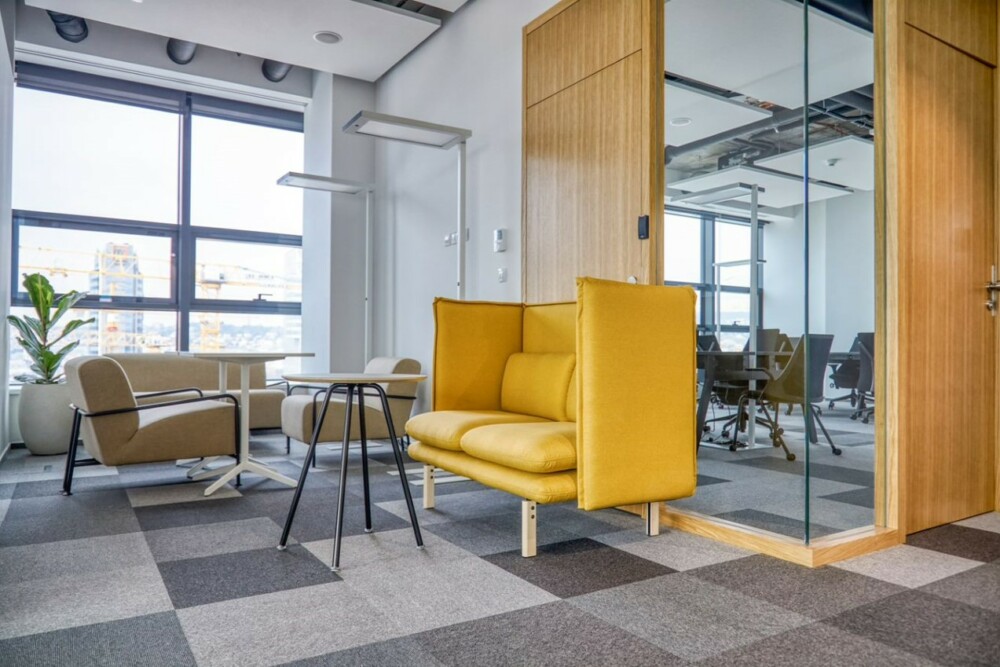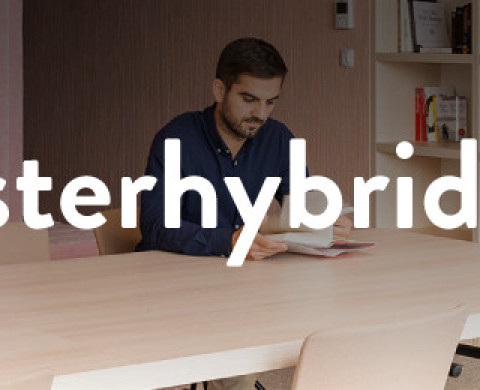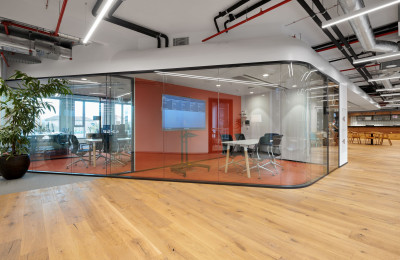Making collaboration work in a hybrid setting
In this week’s #masterhybridwork blog, we look at the impact of hybrid working on collaboration – one of our seven hybrid working headaches.
With research by the Harvard Business School showing that, post-pandemic, 81% of workers would prefer to work hybrid, it’s clear people want the option to work at home, remotely and in the office – it’s one of the reasons why we’ve developed our wide range of hybrid-friendly services and technologies.
But how does hybrid working affect collaboration? After all, it’s part of everyday business life and vital to working, sharing and learning – whether you’re in a small team of five or an international operation with 10,000 employees.
Well, first it’s worth remembering there are lots of perks:
· Happiness. Employees enjoy the freedom of choosing where to work.
· Cost-effectiveness. Companies can redesign their physical office space.
· Safety. Hybrid working keeps employees apart, and safe during a pandemic.
· Talent. Remote working means organisations can hire the best talent wherever they live.
· Visibility. Software can provide a better analysis of an employee’s performance.
· Flexibility. People use their time more efficiently and become more productive.

But it’s not all positive. Hybrid working also brings some unique challenges, and here are the key issues:
Asynchronous communication is when collaboration doesn’t happen at the same time. If you work in the same office, you can usually walk to a colleague’s desk to ask a question. But during the pandemic, employees weren’t used to working online 100% of the time. You had to ring someone, write an email or book a meeting. All of which led to slower decisions, planning and solutions.
Poor technology – whether it’s fit for purpose or simply hangs all the time – can also lead to asynchronous communication. Equally, if you have the right systems, people still need to be trained to use them. And even then, they might be used to working a particular way, and not want to switch.
Online fatigue is when you feel worn out because you think you need to be ‘online’ all the time. Things to consider are the endless calendar of online video calls: when you have to pay close attention to each attendee’s screen, filter out disturbances both online and local, and keep an eye on your own appearance.
Scientists believe this continuous partial attention (CPA) involved with video calls can lead to anxiety, lack of concentration, mental exhaustion, insomnia, loss of appetite and even a lower sex drive. They’ve also found that people who feel more fatigued after a video conference usually have a more negative attitude about the meeting.
More siloed teams refers to the way remote working breaks down interpersonal business relationships. Usually, teams get to know each other by working in the same office or in regular meetings. However, hybrid working can lead to a range of issues – from someone making a key decision autonomously instead of seeking advice, to the loss of the company culture.

It can also be hard to appreciate the hard work of others, and tougher still to learn new skills or motivate or mentor others. Indeed, research has shown that one bad working relationship can negatively affect a team’s satisfaction, organisational commitment and effectiveness, and make employees significantly more likely to be planning to leave their job.
Prototyping can be difficult in poorly managed hybrid environments too. An essential step for any innovation, prototyping requires people to put their heads together and develop, test and improve an idea.
Online technology can hinder this process. Sometimes prototyping needs in-person brainstorming, sketching and the freedom to ask difficult questions – oral communication, reflection and feedback that’s tough to replicate through a laptop. And then there are the added problems of video-conferencing tools, broadband problems, system delays, echoing audio and the all the challenges that come with integrating different devices and software.
Innovation itself isn’t always as smooth either. To understand the difficulties, consider the concept of innovation: a process of introducing or improving a product or service. Innovation requires various types of activities and interactions – many of which may be accidental, and simply can’t be planned.
Yet because networks are weakened and it’s harder to collaborate, people struggle to share their thoughts and ideas. There’s less spontaneous communication. In fact, in communication, the Allen Curve shows that if you don’t see someone face to face, you don’t collaborate with them.
What’s the answer?
There is no one-size fit all when it comes to hybrid. Some companies might find the move seamless; others might find some elements of their work impossible to be managed remotely.
It helps to first look at what your people actually do. Some activities, like deep focus work, can be done remotely. Collaborative tasks, on the other hand, are best performed in a physical space. We’ve explored the process of categorising work activities in detail here, but there are other factors to consider as well.
Upskill your leaders so they can be effective remotely. First, they need the right tools and support. Then you need to help your managers feel confident that they can trust their team-members: they need help switching from management by presence to management by objectives. It all starts with a mindset, and your leadership team must be advocates – champions of the transitioning to hybrid working.
Educate employees about new working habits and rules. Make sure everyone knows practical things like how to schedule a visit to the office, whether to keep their camera on during video calls and what hours they need to be available. But don’t forget the softer skills involved with hybrid working, like how to stay involved in a meeting when they’re the only participant who’s remote.
Make your space social. Make sure the layout and design of your physical office helps people to collaborate and socialise. Keep some areas reserved for informal chats and breakouts. And provide rooms that can host different types of meetings, as well as creative discussions and longer-term project work. Naturally, your people will need the technology to support hybrid discussions with remote attendees too.

Implement collaborative software. There are a range of useful IT solutions for hybrid collaboration, from online whiteboards and visual team platforms to tools like Catch a Space, which helps your people plan trips into the office alongside other colleagues to make collaboration easier.
Keep your company community alive. It’s easy to feel disconnected if you don’t interact with colleagues often. So actively work on your culture at all levels. Support face-to-face team-building activities. Organise events and programmes for all employees. Help people to collaborate for a worthy cause. And make sure your workspace is designed to encourage informal interactions as well as formal meetings – not just within teams but across your organisation too.
This last point is something we’ll look at more closely next week with our second hybrid headache – ‘sense of community’. When people work so autonomously, it’s hard to build a shared ethos and set of values. Plus, individual interactions can breed poor business ethics. Stay tuned to learn more about this loss of community can have – and what you can do to combat it.
Sign up below to get an alert when it goes live.
"*" indicates required fields




